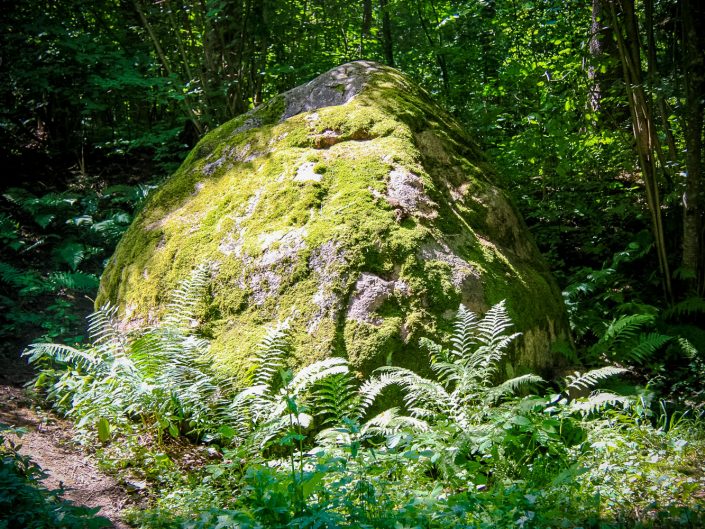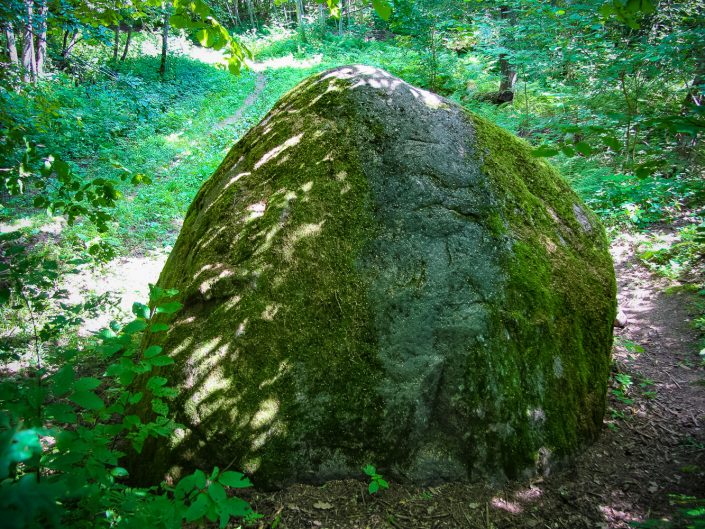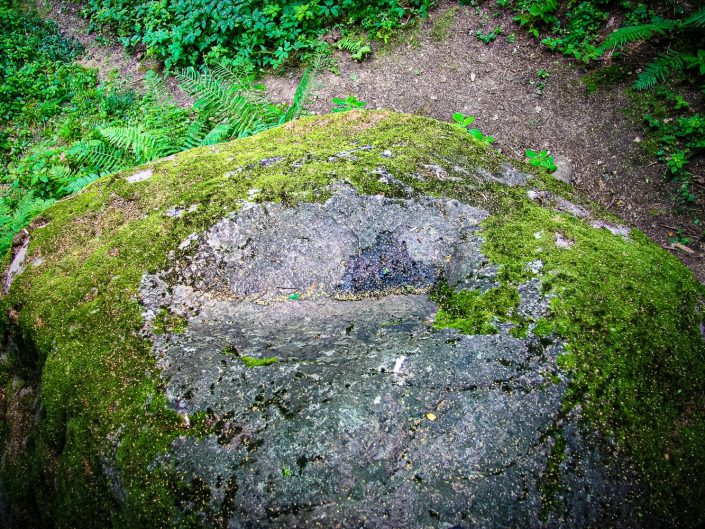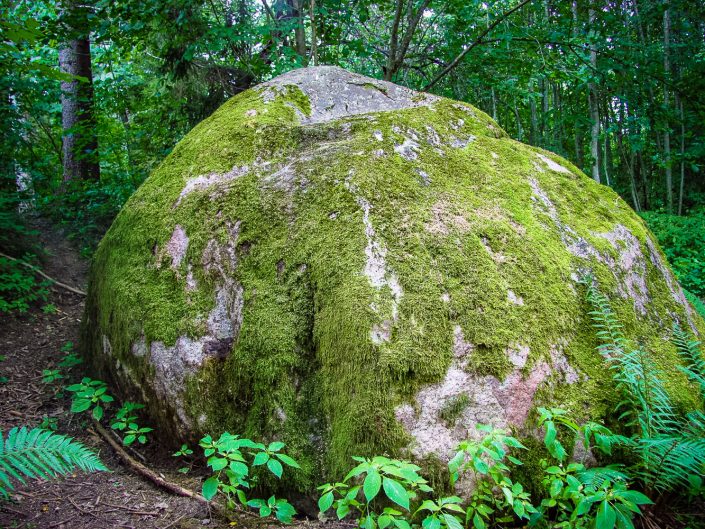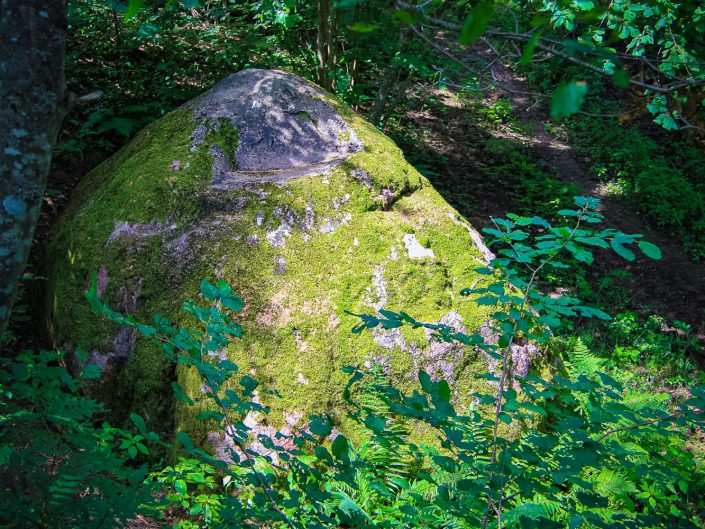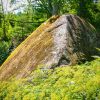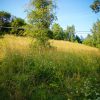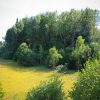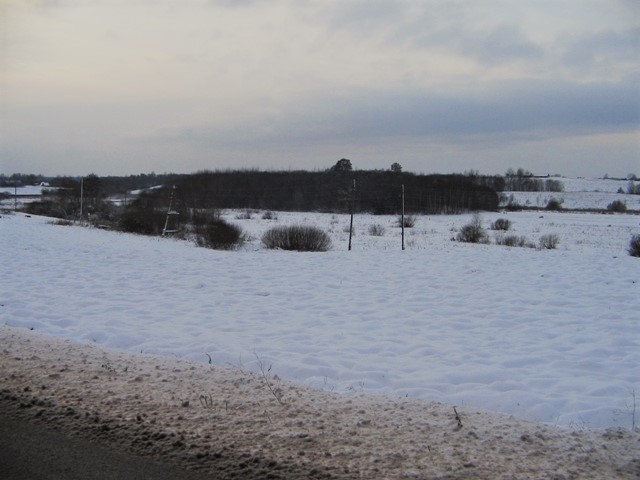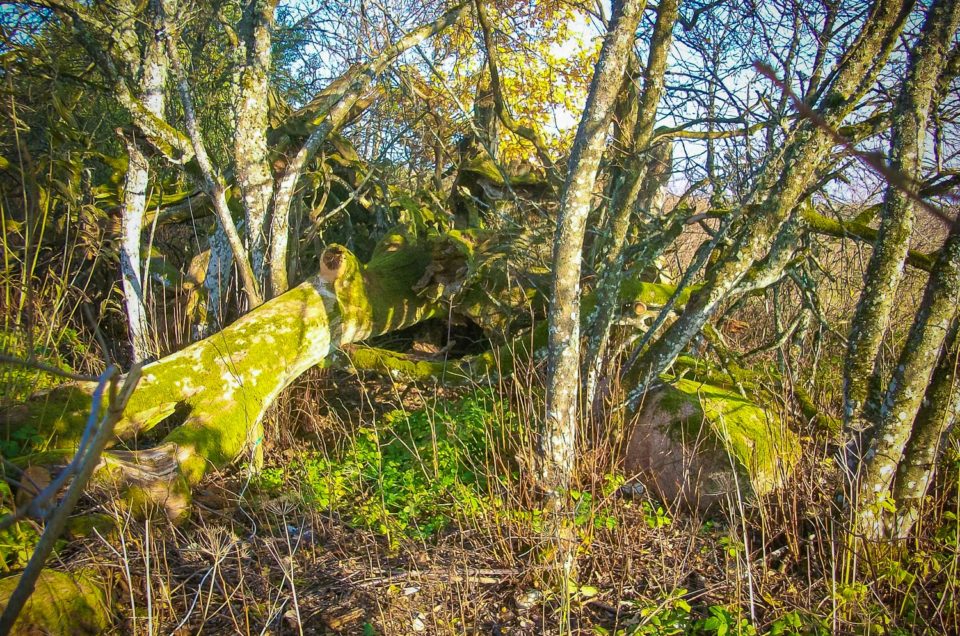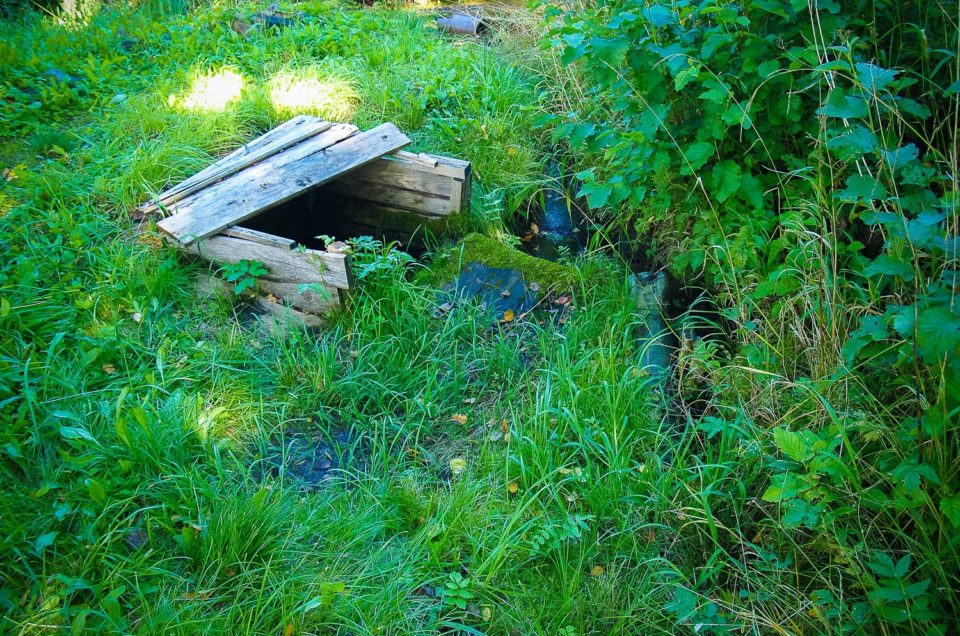State archaeological heritage (State Inspection for Heritage Protection, No 1795). Judging from tales, narrations, and the hollow, the Īvāni Devil’s Stone is related to ancient cult traditions. In the nearby area the stone is the largest one: its height is 2.4 m, circumference of 12 m. A gently sloping trough had been carved in one of the sides of the roundish conical stone, the length of which is 1 m, width of 0.3 m, depth of 4 cm. On one of the stone’s edges there had been steps carved. Already since the end of the19th century, there have been tales recorded about the Īvāni Devil’s Stone. At that time, according to tales, the stone was names the Leiši Osier Stone (Leišu kārkla akmenis), though the origin of this rather peculiar name has not been established (Urtāns, 1993).
In 1894, Priednieku Pēteris in the newspaper “Balss” wrote, “In former times they used to make offerings to the spirits at this stone. But the master was told about that, so he forbade it firmly. During the war times under this stone, money was hidden that once in a while was ordered by the Devil to be dried.” The closest surroundings of the Īvāni Devil’s Stone had been badly dug up, because people believed the tales and searched hard for the hidden money. According to elderly people’s narrations, yet in the middle of the 19th century at summer nights people brought offerings there — rye spikes, eggs, coal, — and placed them at the stone, but not in the hollow as one could probably imagine. They believed that at the stone there was a bad place and near it often the lightning struck. This stone wrapped up with various tales was also called the Sacrificial Stone. Judging from tales and the type of the hollow, it is considered to be a Basin Stone and related to ancient cult and other traditions (J. Urtāns. 1990. Footstones, Boundary Stones, Basin Stones). “Once some shepherds pastured cattle not far from the stone. Then by the midday some black gentleman approached them and promised to give the shepherds a whole barrel of gold if they gave him the best-fed bull. The barrel with money rolled out, but the bull was attacked by wolves. The shepherds scared away the wolves, but the barrel rolled under the stone again.” (Urtāns, 1993)
Next to the stone behind the hazel-tree, there is a large old crabapple.
Extra materials:
Contains information from the project:

Added by
www.latvijas-pilskalni.lv, www.senvietas.lv un hillforts.eu izveidotājs un uzturētājs.
